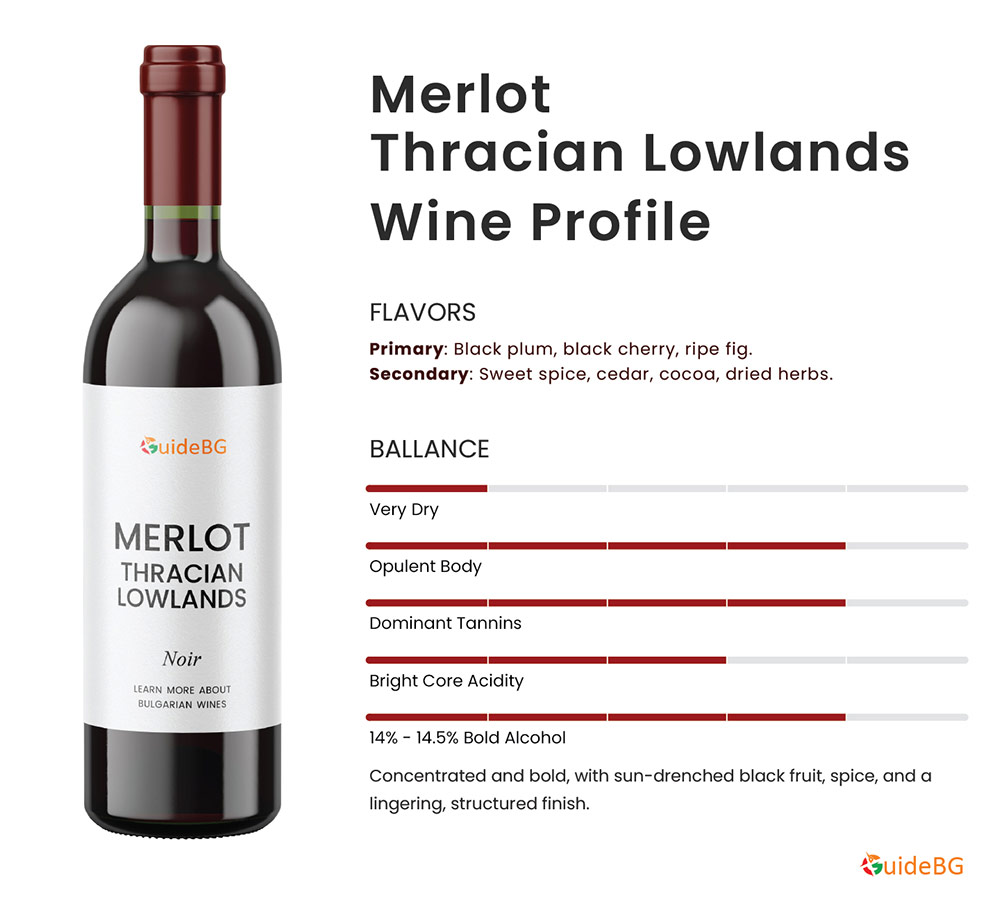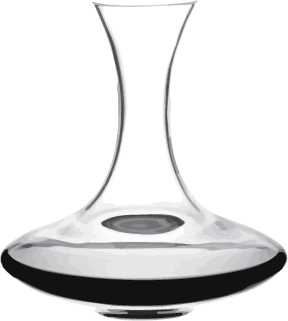The Thracian Lowlands — Bulgaria’s most iconic wine-growing region — is where Merlot reaches its fullest potential. With long, dry summers, mild winters, and well-draining soils, this southern terroir offers perfect ripening conditions for Merlot, yielding wines of power, richness, and aging ability.
Often planted alongside Mavrud, Syrah, and Cabernet Sauvignon, Merlot produces deep, structured reds that rival the intensity of much warmer-climate wines while retaining balance and freshness.
Key PDOs in this region include Sakar, Stambolovo, Harmanli, Bolyarovo, Ivaylovgrad, and more.

Concentrated and full-bodied, Merlot from the Thracian Lowlands delivers ripe black plum, cherry, and fig layered with sweet spice, cedar, and cocoa. Its firm tannins and bold alcohol are balanced by a bright core of acidity, creating a powerful yet harmonious wine.
Serving
16-18°C

Standard red

60 min

Food Pairing
It is perfect with slow-roasted meats, lamb kebab, venison stew, and grilled Balkan dishes like chevre or stuffed vegetables with rice and herbs. The wine’s structure complements smoked meats, aged sheep cheese, and spice-heavy sauces.
What to Look For?
Merlot wines from this region are typically deep ruby to garnet, with intense fruit concentration, oak-driven complexity, and firm but polished tannins. Aging develops notes of leather, fig, and tobacco.
Cellaring Potential
Many Thracian Merlots — especially from Sakar or Stambolovo — age beautifully for 7–10 years, gaining elegance and secondary layers with time.
Blending Partners
- Often blended with Cabernet Sauvignon or Syrah for structure
- Sometimes softened with Rubin or Merlot from other microzones
- Occasionally paired with Mavrud for a powerful, distinctly Bulgarian cuvée
Alternative Grapes
Try Rubin for a depth similar to Bulgarian spice or Mavrud for a more rustic, powerful expression. Cabernet Sauvignon from the same region offers darker fruit and more tannin.


